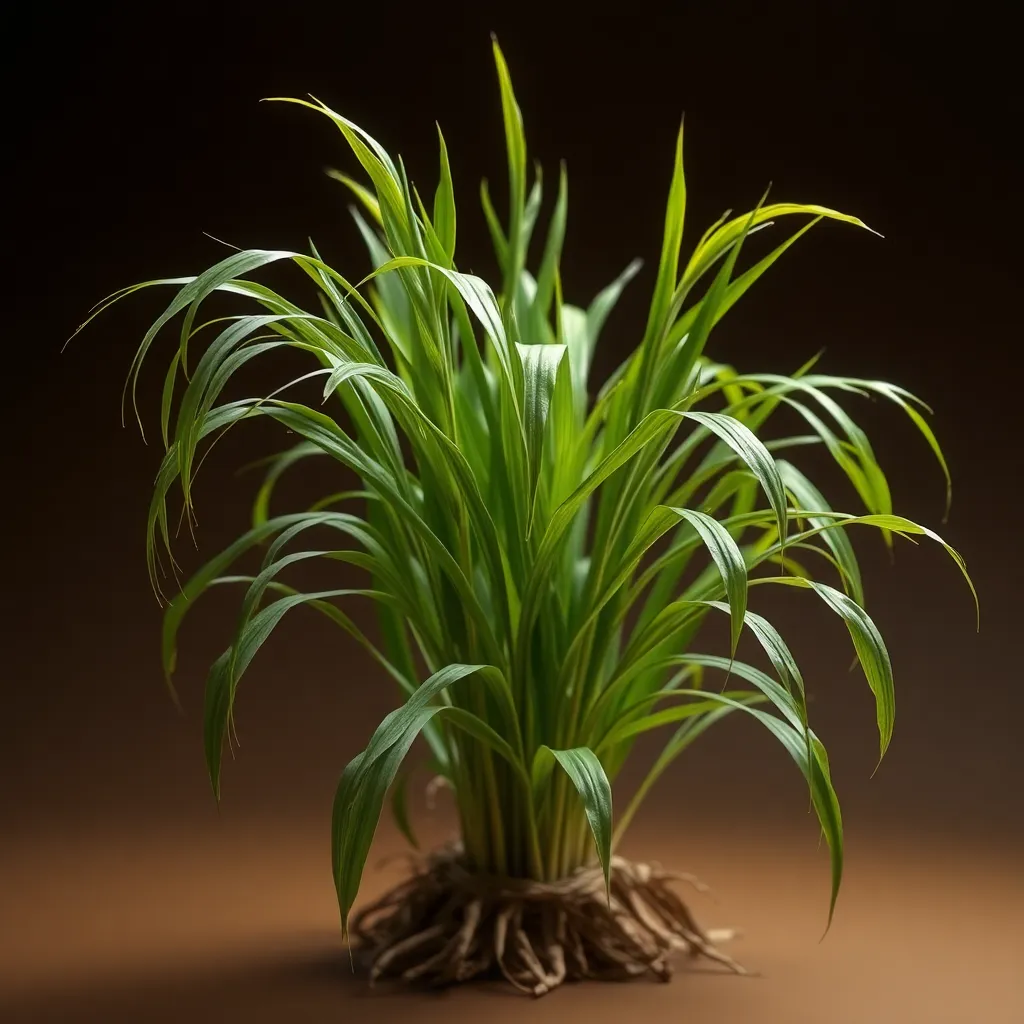The Papyrus Plant: From Writing Material to Sacred Symbol
I. Introduction
The papyrus plant, known scientifically as Cyperus papyrus, is a tall, aquatic plant that has been a cornerstone of ancient Egyptian civilization. It holds great significance not only as a practical resource but also as a symbol of life and rebirth in the rich tapestry of Egyptian mythology. This article aims to explore the historical and cultural importance of papyrus, tracing its journey from a humble writing material to a sacred emblem intertwined with the beliefs and practices of ancient Egypt.
II. The Botany of Papyrus
A. Description and characteristics of the papyrus plant
The papyrus plant can reach heights of up to 4 meters (13 feet) and is characterized by its tall, triangular stems topped with a bushy cluster of feathery flower heads. The plant thrives in shallow waters, typically found along the banks of the Nile River and in marshlands.
B. Natural habitat and cultivation methods in ancient Egypt
In ancient Egypt, papyrus grew abundantly in the Nile Delta. Egyptians cultivated it by planting rhizomes in wet soil, where the plant could flourish in the warm climate. Harvesting was done by cutting the stalks at the base, allowing for sustainable growth. The versatility of papyrus made it an integral part of daily life, providing materials for various uses.
III. Historical Uses of Papyrus
A. Development of papyrus as a writing material in ancient civilizations
The use of papyrus as a writing material dates back to around 3000 BCE. Ancient Egyptians developed a process to create sheets of papyrus by cutting the stalks into thin strips, soaking them in water, and then pressing and drying them. This innovation paved the way for record-keeping, storytelling, and administration.
B. Comparison with other writing materials
- Parchment: Made from animal skins, parchment was more durable but also more expensive than papyrus.
- Clay tablets: Often used in Mesopotamia, these were durable but cumbersome and less practical for writing lengthy texts.
While each material had its merits, papyrus became the preferred medium for writing in ancient Egypt due to its availability and convenience.
IV. Papyrus in Ancient Egyptian Culture
A. The role of papyrus in daily life and administration
Papyrus played a crucial role in the administration of ancient Egypt. It was used to document everything from tax records to legal contracts. Scribes, who were highly respected members of society, were trained in the art of writing on papyrus, making it an essential skill for governance and commerce.
B. Usage in religious texts and literature
In addition to administrative uses, papyrus was the medium for religious texts, including the Book of the Dead, which contained spells and prayers for the afterlife. Literature flourished on papyrus, with stories of gods, myths, and daily life captured in written form. This preservation of knowledge allowed for the continuity of Egyptian culture through generations.
V. Papyrus as a Sacred Symbol
A. Symbolism of papyrus in ancient Egyptian mythology and art
In ancient Egyptian mythology, the papyrus plant represented life, resurrection, and purity. It was often depicted in art and used in various ceremonies. The goddess Isis, associated with motherhood and magic, was frequently shown holding papyrus, symbolizing fertility and renewal.
B. The significance of papyrus in funerary practices and offerings
Papyrus was also significant in funerary practices, where it was used to create scrolls that were placed in tombs as offerings. These scrolls contained spells and prayers intended to guide the deceased in the afterlife. The presence of papyrus in tombs underscored its role as a bridge between the living and the dead, making it a sacred object in burial rites.
VI. The Decline of Papyrus
A. Factors leading to the decline of papyrus production
Despite its historical significance, the production of papyrus began to decline around the 4th century CE. Several factors contributed to this decline:
- Overharvesting and environmental changes led to a decrease in papyrus plants.
- Invasions and political instability disrupted trade and cultivation.
B. The rise of alternative materials and their impact on papyrus usage
With the decline of papyrus, alternative writing materials gained popularity. The introduction of parchment and later paper provided more durable and accessible options for writing. This shift marked the end of an era for papyrus, which gradually fell out of favor as a primary writing medium.
VII. Modern Interpretations and Uses of Papyrus
A. Revival of papyrus in contemporary art and craft
In recent years, there has been a revival of interest in papyrus, particularly in the fields of art and craft. Artists and crafters are rediscovering the unique texture and aesthetic of papyrus, using it in various projects from painting to bookbinding.
B. Educational and cultural significance in modern society
Papyrus also holds educational significance today, serving as a tangible connection to ancient Egyptian history. Museums and educational institutions often use papyrus artifacts to teach about ancient cultures, writing systems, and the evolution of communication.
VIII. Conclusion
The journey of the papyrus plant from a practical writing material to a sacred symbol reflects the profound impact it had on ancient Egyptian civilization. Its versatility allowed it to serve various functions, while its symbolic meanings enriched the cultural and religious life of the Egyptians. Today, the legacy of papyrus continues to endure, inspiring modern interpretations and reminding us of the rich history it represents.




